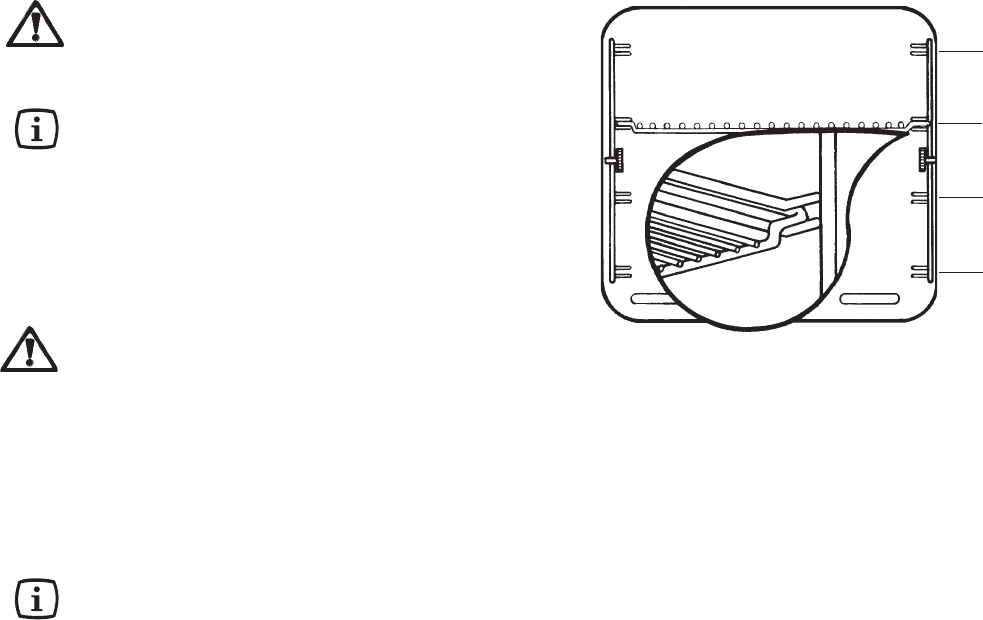
9
Condensation and Steam
The oven is supplied with an exclusive system which
produces a natural circulation of air and the constant
recycling of steam. This system makes it possible
to cook in a steamy environment and keep the
dishes soft inside and crusty outside. Moreover,
the cooking time and energy consumption are
reduced to a minimum. During cooking steam may
be produced which can be released when opening
the oven door. This is absolutely normal.
However, always stand back from the oven
when opening the oven door during cooking or
at the end of it to allow any build up of steam
or heat to release.
If the steam comes into contact with a cool surface on
the outside of the oven, e.g. a trim, it will condense
and produce water droplets. This is quite normal and
is not a fault with the oven. To prevent discolouration,
regularly wipe away condensation and also soilage
from surfaces.
Cookware
• Use any oven proof cookware which will withstand
temperatures of 230 °C.
• Baking trays, oven dishes, etc. should not be placed
directly against the grid covering the fan at the back of
the oven, or placed on the oven base.
• Do not use baking trays larger than 30 cm x 35 cm (12
in x 14 in) as they will restrict the circulation of heat
and may affect performance.
Hints and Tips
Using the Oven
Always cook with the oven door closed.
Stand clear when opening the drop down oven door.
Do not allow it to fall open - support the door using
the door handle, until it is fully open.
The oven has four shelf levels, and is supplied
with two shelves. The shelf positions are counted
from the bottom of the oven as shown in the
diagram.
It is important that these shelves are correctly
positioned as shown in the diagram.
Do not place cookware directly on the oven
base.
4
3
2
1
Attention! - Do not place objects on the oven base
and do not cover any part of the oven with
aluminium foil while cooking, as this could cause
a heat build-up which would affect the baking
results and damage the oven enamel. Always
place pans, heat-resisting pans and aluminium
trays on the shelf which has been inserted in the
shelf runners.
The effects of dishes
on cooking results
Dishes and tins vary in their thickness, conductivity,
colour, etc. which affects the way they transmit heat to
the food inside them.
A Aluminium, earthenware, oven glassware and bright
shiny utensils reduce cooking and base browning.
B Enamelled cast iron, anodized aluminium, aluminium
with non-stick interior and coloured exterior and dark,
heavy utensils increase cooking and base browning.


















